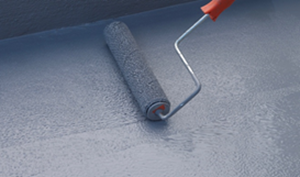Belzona announces Belzona 5815 – a containment grade coating with enhanced flexibility
In numerous industries, concrete is used to build secondary chemical containment areas and bunds. The function of these structures is to retain spilled chemicals, facilitate product recovery, and prevent environmental contamination, as required by environmental and safety regulations.
While concrete is a cost-effective and sturdy material, it is susceptible to physical and chemical damage due to its porosity. Concrete walls and floors are prone to damages caused by cracking, increased porosity, reinforcing bar corrosion, and chemical attack. If the deterioration is not addressed early, the structural integrity of the concrete may suffer, and even with the use of the bund, it can result in contamination of the surrounding areas and groundwater. Concrete also moves mostly due to thermal expansion and contraction. If expansion joints are not placed and spaced accordingly, this movement can lead to cracking, affecting the monolithic character of the concrete substrate and exacerbating ingress of chemicals.
Therefore, a great number of asset owners opt for containment areas coated with protective coatings. Some of these coatings are specifically designed for chemical resistance to aggressive chemicals whereas others are less chemically resistant but more flexible, hence ideal for crack bridging. Products like Belzona 4361, for instance, provide both outstanding chemical resistance and flexibility. However, it could be quite costly for secondary containment applications where the stored chemicals are rather benign. This was the main reason for launching Belzona 5815, a solvent-free containment grade coating with enhanced flexibility.
When compared to other containment coatings in the market, Osmay Oharriz, Technical Manager at Belzona, notes that: “Belzona 5815 is an economical solution to secondary containment areas holding nonaggressive chemicals.”
Belzona 5815 has undergone testing to prove that the product can resist a range of dilute acids, alkalis, fuels, and oils. Moreover, “it can bridge cracks in concrete up to an extent” and “has great adhesion to nonmetallic and metallic substrates”, Mr. Oharriz adds.
Testing also proves that it has high tensile and flexural strength as it can resist pressure up to 2,430 psi after it has been cured at 72 °F (22 °C) for seven days, allowing it to bridge cracks. Additionally, it is temperature resistant, enduring temperatures up to 320 °F (160 °C). For many applications, the product is suitable at temperatures down to -40 °F (-40 °C). Finally, Belzona 5815 is easy to mix and apply, no surface conditioner is required. Belzona 5815 can be applied by brush, roller, squeegee, or an airless spray system for large containment areas.



